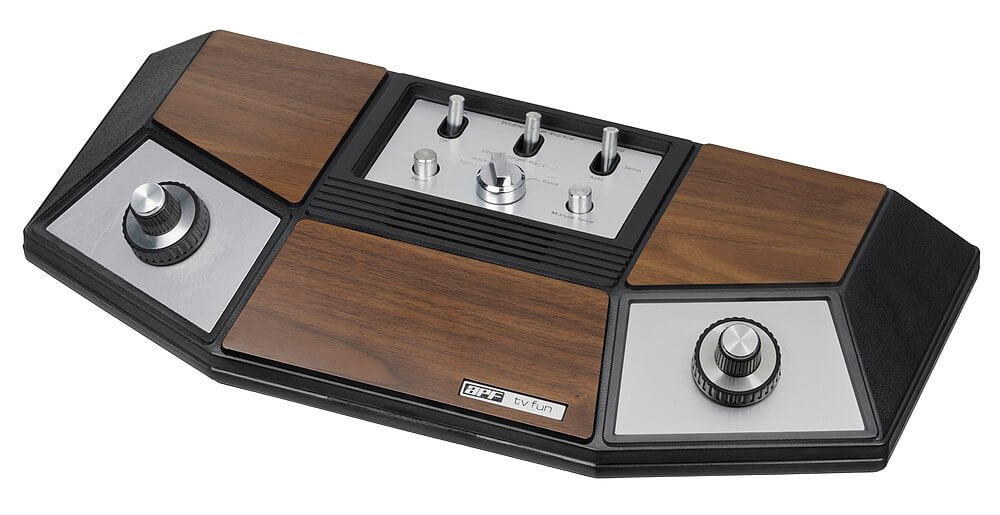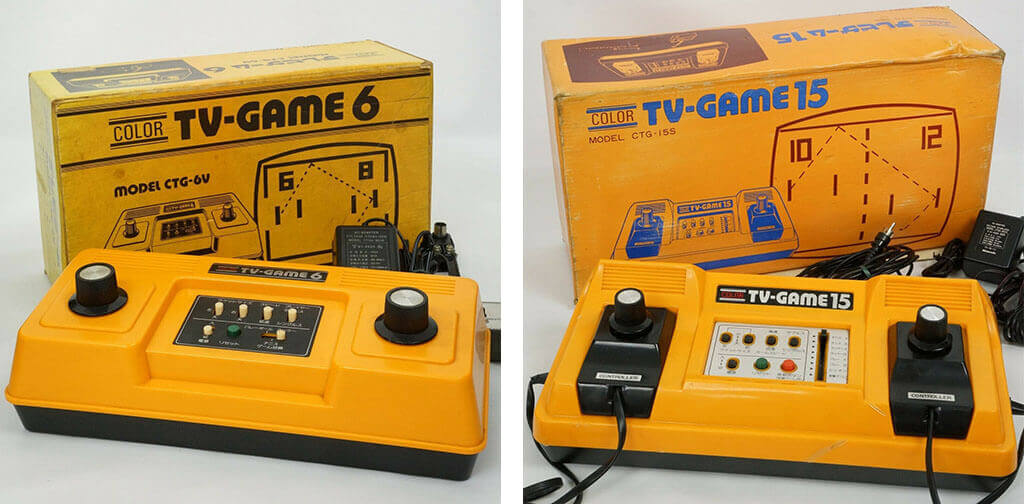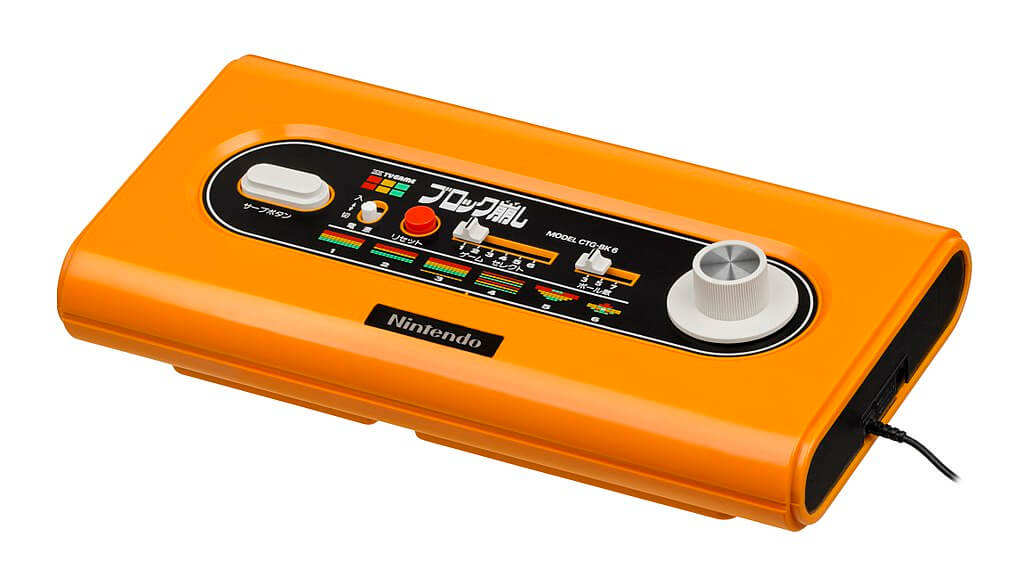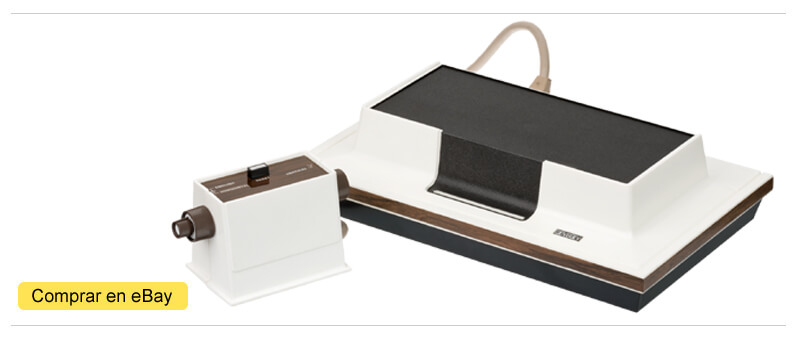The first generation of video game consoles is, without a doubt, the most important generation in the history of video games, without the consoles that starred it and its video games, nothing we know would have been possible. Started with the Magnavox Odyssey in 1972 in the United States, with the launch of the first console, a journey began that would become the most profitable entertainment industry in history.
START DATE: 1972
FIRST CONSOLE: Magnavox Odyssey
- Consoles of the first generation in Infoconsolas.
- The first generation of consoles, background.
- The first generation of consoles, course.
- The first generation of consoles, legacy and consequences.
- The public of the first generation of consoles.
- The games of the first generation.
- Collect first generation consoles.
- Buy consoles of the first generation.
- FAQ First generation video game consoles
Consoles analyzed in Infoconsolas.
Here are the consoles that we have analyzed from the Infoconsoles collection, little by little we will update them and add new systems that we have not yet uploaded to the web. If you have been left wanting more, here is retro pure and simple!
The first generation of consoles, background.
The history of video games dates back to the periods of conflict in the Second World War, large computers designed to decipher messages from the enemy or to calculate the first virtual ballistic tests, laid the foundations for mathematics, engineering and the need for survival, those gigantic machines called computers evolved, until they were consolidated as an essential tool for any nation looking to the future.
The Second World War ended and due to the end of the war, in which the world was amazed at the devastating power of science and its atomic bomb, everything related to science suffered considerable disrepute among the population, being especially important in the case that occupies us what happened in the United States. Being aware of the need to win a race, the arms industry in the midst of the cold war linked more than ever to the new computers, at a time when citizens rejected everything related to science out of fear, with the consequent difficulties that this entailed to financially endow the corresponding items, the North American government began a campaign to clean up the image of everything related to science, and to the nuclear. Suddenly, scientists were endearing beings and in a few years we would all have a nuclear jet car in our homes, that was the future they were selling us…
In this way, the American laboratories were opened to the public and ceased to be dark secrets to become -in part- an attraction for all audiences with visits and dedicated fairs. And like any self-respecting attraction, children needed fun, a game, that game came in the form of Tennis for Two on an oscilloscope (1958), a technological marvel that dazzled young and old. Previously, nations and large corporations had already built computers that were capable of running games like OXO or NIM as examples of progress in AI, but the general public had not had access to these systems, Tennis for Two was the first glimpse video games as we know them today.
Later in the 60’s, computers would lower their production costs and reach more universities and therefore more students, the perfect combo for the creation of the first video game in history on a computer, we are talking about Spacewar! running on a PDP-1 at MIT from Steve Russell. The spark had been lit and from military beginnings, video games had made the leap to civilian ones, still being framed in an exclusively university environment. Continuing in the university environment, we find ourselves in September 1971, with the first arcade game in history, the Galaxy Game, an evolution of Spacewar! that he had jumped from campus to campus reaching Stanford, where he settled in the university cafeteria for 10 cents a game. Inside there was a PDP-11/20 and despite having had the great idea of the century, its creators did not know how to scale a business model that years later would conquer the world, the arcade games. Against him, the arcades lasted on campus with different improvements until 1979, being limited to the use of university students.
And it is at this point, where the well-known Nolan Bushnell, founder of Atari and his “second arcade in history”, comes into action with the video game Computer Space, another evolution of Spacewar! running on dedicated hardware much cheaper than a computer of the time, inserted in a shiny and futuristic cabinet and most importantly, distributed in the most everyday and crowded places, that is, bars, restaurants and coffee shops among many others. Nolan Bushnell had the vision to see the potential of video games as arcade machines. Previously the United States was full of jukeboxes, pinball and mechanical arcades, Nolan was able to create a new parallel virgin market, that of video game arcades. The future came into the hands of the people.
With 1,500 units manufactured. Computer Space failed in the controls and in being too difficult a game for those who had never played a video game, but Nolan learned from the experience and would go to work on a new creation available to all audiences through a new arcade , now yes, with his recently founded Atari.
We are now moving on to the first console in history, but if you have been left wanting more, here you are: the history of video games, the beginnings.
The 1st gen. of consoles, the Pong.
While different people had had the similar approach of bringing video games to the general public through arcade machines, engineer Ralph H. Baer, known as the father of video games, was working on a completely different initial concept: Introducing video games on our televisions. , being able to play from home by selecting your channel… Ahead of its time!
With the idea of creating an “interactive television” since 1951, it was not until 1969 that he finished his seventh and definitive prototype: “The brown box”. After several rounds, Magnavox was the company that was really interested and decided to make what would be the first video game console in history, the Magnavox Odyssey. The Magnavox Odyssey was a machine made up of 40 transistors and 40 diodes, without chips or CPU, it had two controls, cards to change games, a rifle as a peripheral and some overlays, which were placed on the screens of our televisions to provide the game of a context and graphics. To these more or less common components, the games were accompanied by tokens, cards and bills such as those of monopoly among others, since far from what many can imagine, the first console in history had, thanks to these accessories typical of the board games, geography video games, shooting, tag team, strategy… And Table Tennis, or Ping Pong.
Ping Pong or directly, Pong, was the game that monopolized the console and therefore, video games, their extreme simplicity and addictiveness hooked everyone who tried it, also being a game that did not need an overlay and was designed for two players, for what became the undisputed king of the console. The result of the tremendous success that the game (not a console) reaped, translated into a multitude of consoles and arcades that emulated the game, the most well-known cases being those of Atari and its arcade Pong, as well as its console launched in 1975, the Atari Pong. As expected, Magnavox initiated a series of lawsuits against all the brands that did not pay for their Pong and video game license.
As we have said, the Magnavox Odyssey lit the fuse and many other brands followed, the market was filled with consoles that offered variants of Pong, starting a technological race to make things cheaper, which went from analog, to the first integrated chips such as the Atari Pong, and later the standardized use of the extremely popular General Instruments AY-3-8500, specialized PONG chips that already had predefined games, being able to change different variants such as speed and others by each manufacturer. Actually, the hundreds of Pong-type consoles that came out in the 70s had practically the same games, all of them being variants of Pong, whether it was called Soccer, Squash, Tennis or volleyball. Only honorable exceptions such as the first Break Out (later known as Arkanoid) that evolved from Pong creating their own genre, and rifle games, offered variety to the public.
To give you an idea of the extent to which the Pong phenomenon succeeded in the 1st generation of video game consoles, only the Atari brand launched more than 20 Pong-type consoles, now let’s add up all the brands that signed up for the fashion of video games like Coleco, Nintendo, Philips, Zanussi, Epoch, Interton, TRQ, Bentley, Conic, Bianchi, Bandai, Commodore, APF, plus all clone and pirate consoles from Hong Kong and as a result we will have a complete saturation of the market of video games.
A multitude of brands entered the video game market at the same time, without giving enough time for it to grow enough in base users to absorb the entire offer. With hundreds of consoles offering practically the same games, with brands focusing on those countries where they had the most authority and access, the battle that was waged was fierce. What had emerged as state-of-the-art technology soon fell in price until it became affordable products for the middle classes. Even so, once a family acquired a first-generation console, they had little reason to buy another Pong console, so in a few years the market slowed down and took over, causing the vast majority of companies that had signed up for the fashion of video games, they did not launch new consoles in subsequent generations.
In case it wasn’t clear, the 1st generation of video game consoles was PONG, PONG, PONG and more PONG.
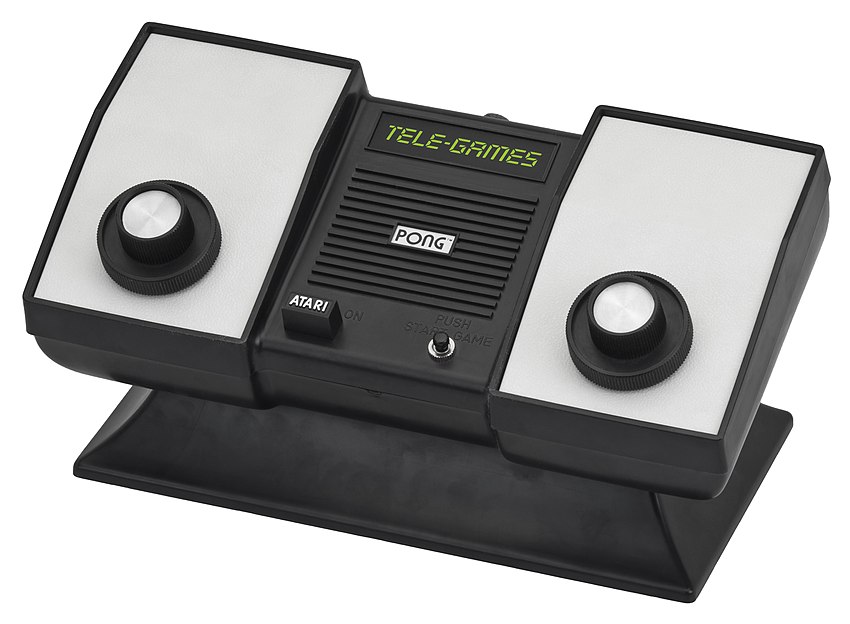
La 1ª generación de consolas, legado y consecuencias.
In just a few years, video game consoles were able to create a new entertainment, hobby, market, industry and passion. The video game boom had exploded and had crossed borders and generations. A product launched in 1972 in the United States, multiplied and conquered the globe passing through all the continents. Manufacturers from all over the world were encouraged and launched their own consoles, bringing the phenomenon of video games to the whole world. And no, let’s not think only of Japan or Germany, Spanish-made consoles such as the TRQ or Overkal (1973), brought video games to our borders in a time when there was neither the internet nor globalization as we know it today. day.
The first generation of consoles took the world by storm and proved that a newly created industry was viable and had great potential. To those visionaries we owe everything we have today, so we will always have an outstanding debt with them.
The public of the first generation of consoles.
Who bought the first consoles? What audience were the first video games aimed at? In the early years, in addition to consoles, video games were developed mainly in parallel arcade machines, these machines being more powerful and expensive, their business model was to place units in very crowded places, so that many people could play a single machine at a very low cost (a few cents). This model, that of the arcade machines, was an enormous success and business, contributing to a greater extent than the consoles to popularize video games.
In this way, video games were able to reach a much wider audience: In taverns and bars, the arcades offered young people and adolescents with little purchasing power, games for a few cents and, for those parents who worked and did not have time going to bars, the consoles were a perfect new entertainment to enjoy with the family.
Consequently, the first video game consoles were intended to persuade people who, in the 1970s, had the purchasing power to invest $100 in a new technological device, that is, the working family head. Today it may sound archaic, but we are talking about society in the 70’s, it is enough to see a couple of announcements of the consoles of those years, to corroborate what was said.
Evidently, the fact that the person who executed the purchase was the father of the family did not exclude the rest of the family as beneficiaries and interested in video game consoles, on the contrary, the first generation of video games was planned to be enjoyed as a family and the children were the perfect bait for all advertisers. In fact, since the North American market was the benchmark for the first generation, the consoles adapted in a very short time, launching systems for large families of 4 or even more players.
The games of the first generation.
The first generation was PONG: In its thousand variants, with more or less definition, with controls on the console itself or individually, in black and white the first ones or in color the latest consoles… Pong after all. With a few exceptions like rifle games, Break Out games, and the Magnavox Odyssey’s early attempts at game diversification, a new industry focused an elaborate, proven-successful unique proposition to a new market whose size was being defined daily, growing to limits. that few imagined in the beginning.
Pong and its variants were important to such an extent that the consoles themselves were totally dedicated to these games through their controls, the usual being that they had one or several wheels to control the direction of the paddle and the effect of the ball, with the menu buttons and video game selection on the console itself. Nothing more was needed.
Regarding the formats, as we have already said, except for honorable exceptions such as the Odyssey and its cards, they were dedicated consoles so they had no cartridges, no tapes or anything, all the games were incorporated into the console itself.
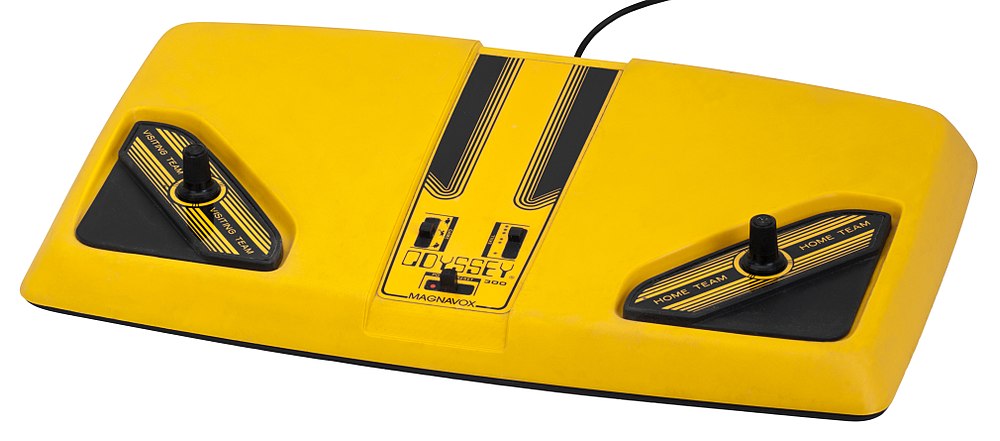
Collect first generation consoles
It is curious how the nostalgia factor influences tremendously over others such as the historical one, when choosing whether to acquire one console or another for our collection. No one hesitates to buy a 16-bit Super Nintendo, but few are looking for an Atari Pong or similar first-generation consoles. That’s fine, it’s normal, but for all those who go a step further in their hobby and passion for video games, once those consoles from our childhood and memories are covered, the first generation consoles are an essential element in any collection that be worth it
Imagine that a video library stopped at the Goonies, that a vinyl collection did not go beyond Tino Casals without reaching the Beatles, that in a museum they only reached the Middle Ages, ignoring Greece, Rome, Egypt… Unthinkable, ¿ TRUE? Well, that’s what happens in most collections of fans and video game lovers.
At Infoconsolas we are perfectly aware that the first generation of consoles is not as replayable as the later generations, nor will they bring pleasant memories to most of them, because most of us were simply not born, but the first generation of consoles is History with capital letters, we have the possibility of having in our hands a transcendental era of this hobby and culture that concerns us, something inaccessible in other branches such as painting or cinema, even if only for its historical value. How not to preserve this generation of consoles? It should be our duty as video game collectors to have at least a representative part of this first generation.
Buy consoles of the first generation
Fortunately for us, except for the most popular consoles of the first generation, we can say that most Pong-type consoles have very affordable prices. The fact of having a much lower nostalgic factor compared to later generations in which there was already a greater number of players, added to the saturation of different very similar systems in a few years, means that there is a wide range of consoles on specialized websites. .
Consequently, for less than 20 euros we can have a console from the early 70s on our shelf, not bad at all, right? Regarding consoles such as the Atari Pong from Sears or the Magnavox Odyssey, being authentic museum pieces they cost a high amount, but still lower than the price of other consoles such as the Neo Geo.
Be that as it may, once again in our beloved hobby we will have to dive through the eBay websites looking for that console that we find interesting. As we have already said, even if it is to have on the shelf, any console collection should have one or more representatives of this generation. To understand the present, you have to know the past.
FAQ First generation of consoles and retro video games
1972.
Magnavox Odyssey.
Ralph H. Baer.
In the United States of America.
Pong and its variants and rifle or pistol games.
The Atari Pong in its different versions.
They were mostly built into the console, except for the Magnavox Odyssey which used cards.
To the relative, with the head of the family as the buyer.
External sources and links
- console graphics resources: https://commons.wikimedia.org/wiki/User:Evan-Amos


